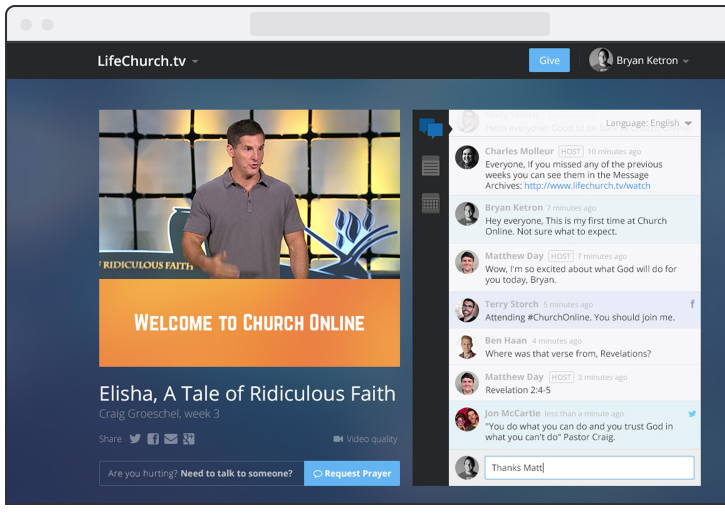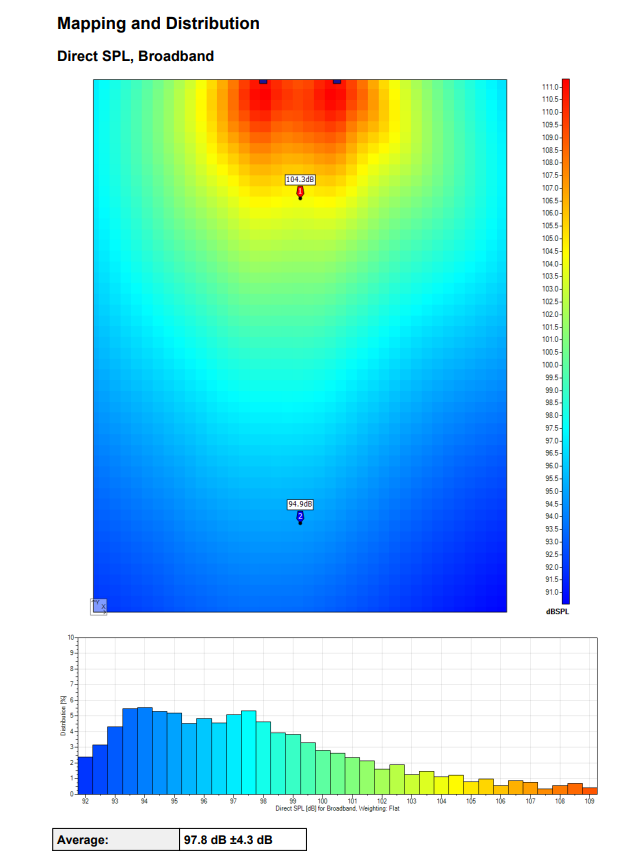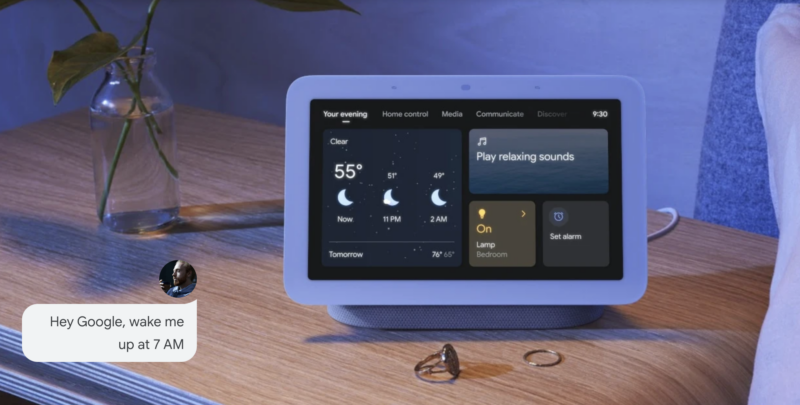Church Online: AVL Upgrades Needed
 Church online: where local churches are hosting either live or video on demand services for attendees who are not at their physical church campuses. Yep, thanks to the technology the Audio/Video/Lighting (AVL) industry manufactures, a rapidly growing number of churches have taken their church services to the congregant, online.
Church online: where local churches are hosting either live or video on demand services for attendees who are not at their physical church campuses. Yep, thanks to the technology the Audio/Video/Lighting (AVL) industry manufactures, a rapidly growing number of churches have taken their church services to the congregant, online.
In my study of this growth, I’ve found some helpful stats and enlightening points that should help manufacturers and systems integrators alike tap into the church online technology gap.
About Church Online
In my research, I have found over 150 churches that have full church online services, complete with an online campus pastor, technical volunteers, software technology for online chat and prayer requests and online giving. These are the churches going all-in with church online and staffing it to build community and have real-time or near real-time engagement with the viewers. Of this group, the average number of online church services held per week was six. This is similar to the multi-site church phenomenon I’ve written about, where multiple services are held across multiple venues and campuses.
For a much larger number of churches, online streaming or video-on-demand of their church services also falls under the title ‘church online,’ though it’s a passive experience for the viewer.
It is estimated that over 25 percent of churches now have some level of online church service option, with nearly 60 percent of mega churches (more than 2,000 in weekly attendance) offering a church online option.
I reached out to several dozen larger churches to gain insight on their experiences with church online. The churches I interviewed have an average attendance of about 2,600 (weekend physical campus, adults plus children), with the notable exception of three churches that have 10,000, 12,000 and over 30,000 in weekend attendance across multiple physical campuses. On average, all of these churches had about the equivalent of 45 percent of their typical weekend attendance in their online church campuses. So, as an example, a church running 1,000 at their physical campuses would see an additional 450 people attending the online campus.
 Roughly 60 percent of the churches interviewed did not actively measure specific types of engagement. More often than not, they are aware of only ‘unique IP addresses,’ which is roughly indicative of between two and three viewers per IP address, according to the responses from my research. Of those that try to understand engagement, the results are usually limited to prayer requests (from chat, email or social media). A few churches are trying sophisticated response mechanisms based on how often they see a particular recurring IP address or the recurrence of specific people when they have software that allows them to track users based on their church online software. One church goes so far as to compile the list of users who logged in through Facebook to generate an email for those who have attended as a means of creating a connection and follow-up opportunity.
Roughly 60 percent of the churches interviewed did not actively measure specific types of engagement. More often than not, they are aware of only ‘unique IP addresses,’ which is roughly indicative of between two and three viewers per IP address, according to the responses from my research. Of those that try to understand engagement, the results are usually limited to prayer requests (from chat, email or social media). A few churches are trying sophisticated response mechanisms based on how often they see a particular recurring IP address or the recurrence of specific people when they have software that allows them to track users based on their church online software. One church goes so far as to compile the list of users who logged in through Facebook to generate an email for those who have attended as a means of creating a connection and follow-up opportunity.
Among the churches that have been online the longest (to date, over four years seems to be a “long time”), it was noted that they de-emphasized numeric viewership growth, focusing instead on creating relational connections (online and offline, when possible) and service opportunities to connect the virtual community to a physical community.
The Opportunity for AVL
Clearly, the growth of technology in the house of worship market continues to find new ways to meet the needs of churches. This opportunity comes with many of the same upgrades in audio, video and lighting a broadcast video system. From the lighting upgrades necessary to create depth/separation from the background for the video camera to the audio-for-video mixing requirements, the technology in play for church online follows many of these familiar upgrade paths.
The differences are in the production style of the church, though the trend is for a multi-camera IMAG (Image Magnification — mostly medium to tight shots projected onto side screens to recreate the experience of sitting in the first few rows of a church service). This is a departure from the typical broadcast video setup, where wide shots of the auditorium and even audience participation/reaction shots are shown to a television audience. With church online, the tight and medium shots are used so that the online viewer has a ‘you’re here with us’ kind of visual vibe and not a detached ‘here’s what it looks like if you’re watching TV and not attending.’
From a vendor perspective, this is a ripe opportunity to be the expert and educate churches on the various pros and cons of audio (audio-for-video feed vs. a front-of-house mix feed), video (IMAG vs. Broadcast), and lighting (environmental vs. video lighting).
These are not small distinctions, as the technology requirements vary greatly, which is another way to say that the staffing demands or training demands also vary greatly. Again, it’s yet another chance to sell service and not just technology.
Not a Replacement Technology
While a growing number of churches are moving to some variant of church online, there are many that view it with skepticism. This is not an automatic sale, as many churches see the physical gathering as a key point of their culture and will not quickly step into a virtual space. For churches that are ready to make this leap, the investment is not insignificant and requires the same level of education and needs assessment as a church in a building program looking to add in AVL technology. Manufacturers have the distinct opportunity of positioning some of their technology for this growing niche within the house of worship market, while systems integrators can address turn-key solutions that allow for a church online experience.
Even for churches, like those I interviewed, that are all-in with church online, this is not a shift away from physical church locations; it’s the next phase of creating connections with people and inviting them into physical community. Take care to position your messaging and advertising accordingly.
Church online is relatively new, but it has roots in multi-site; and that’s a paradigm that has seen exponential growth. See my previous articles about 4K in multi-site churches, the $580MM annual church spend for multi-site, the issues facing multi-site churches, and the growth of multi-site as examples of how manufacturers and integrators need to be paying attention to this massive opportunity.





